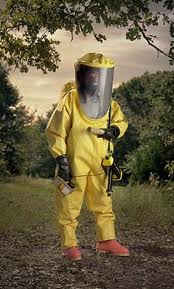Martin Matishak
Global Security Newswire
WASHINGTON — An expert panel said yesterday the U.S. Homeland Security Department has not adequately gauged the potential risks associated with a proposed multimillion-dollar infectious-disease research laboratory in Kansas (see GSN, May 20 ).
There are “several major shortcomings” in a department risk assessment of its planned National Bio and Agro-Defense Facility near Manhattan, Kansas, according to a report by the National Research Council, an arm of the National Academy of Sciences. The proposed site is roughly 120 miles west of Kansas City.
The facility’s construction is expected to cost between $500 million and $700 million. The 520,000-square-foot center, slated to begin construction in 2012, would study highly infectious animal-borne pathogens, some of which could pose a threat to humans. It would replace the Plum Island Disease Center located near Long Island, New York, which was established in 1937.
The new site would also be the world’s third Biosafety-Level 4 Pathogen laboratory to work with large animals. The other two such facilities are in Australia and Canada.
The DHS assessment, which wrapped up in June, found that there is a nearly 70 percent chance a disease would escape the laboratory during its planned 50-year operational lifespan. The earlier report estimated the economic losses from a postulated foot-and-mouth disease outbreak at $9 billion to $50 billion.
However, yesterday’s 146-page NRC analysis states that the actual amount could be “significantly higher” because the department’s assessment did not consider the dangers associated with daily upkeep of large animal holding rooms.
The earlier evaluation was also criticized for inadequately accounting for the planned facility’s proximity to Kansas State University College of Veterinary Medicine clinics, where large numbers of sick animals are treated, as well as the university’s football stadium, which has a capacity over 55,000. The large animal and human populations at those sites would be potentially susceptible to infections with a zoonotic agent, the report states. About 9.5 percent of the entire U.S. cattle inventory is raised within 200 miles of the Manhattan site.
The DHS assessment also did not account for the lack of adequate medical care in the surrounding area to deal with a potential disease outbreak, the analysis states. There is one medical center nearby and it lacks the resources to handle such an event, according to the report.
“Building a facility that is capable of large animal work on a scale greater than other high-containment laboratories presents new and unknown risks that could not be accounted for in the DHS risk assessment because of a lack of data and experience,” Ronald Atlas, who chaired the research council committee, said yesterday during a telephone press conference.
“The risk assessment should be viewed as a starting point, and given more time, it could have progressed further. As more information emerges, an updated analysis could be appropriate,” said Atlas, co-director of the Center for Health Preparedness at the University of Louisville in Kentucky.
Despite its critique, the newly minted report does not question the basic requirement for such a research center.
“There is a need for a facility like the NBAF to be constructed and operated in the United States,” it states.
In July the Government Accountability Office released a report that said the Homeland Security Department had used “inadequate” site information in its NBAF selection process and labeled the decision to place the new facility in a natural disaster-prone state as “scientifically indefensible.”


Be the first to comment on "DHS Report: 70% Chance Disease Will Escape Proposed Biodefense Laboratory"